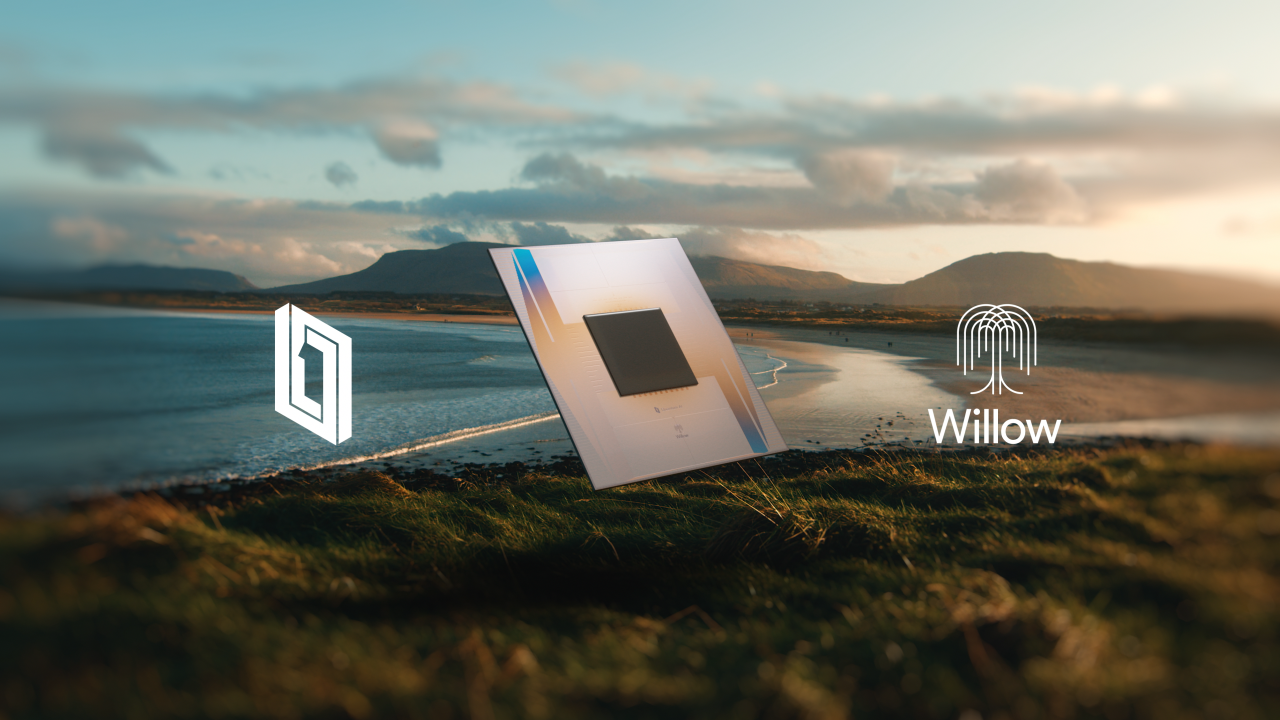The Wonders and Opportunities of the New Google Willow Quantum Chip

On the 9th of December, 2024, Google announced their new Willow Quantum Chip. Hartmut Neven, the founder and lead of Google Quantum AI, explains the possibilities of this new technology, and Willow's potential for solving complex problems that are way beyond the reach of classical computers. He also discusses the chip's abilities to promote error correction along with ground-breaking performance improvements that will pave the way for large-scale quantum computers. Here we delve into the details of this new technology and propose additional information on quantum computing and what we may expect of it in the coming years.

But First, What Is Quantum Computing?
Let's first review the basics of Quantum Computing. Quite simply, quantum computing is a form of computing that stores information by utilising the quantum states of subatomic particles. Subatomic particles are particles made up of parts smaller than an individual atom. Quantum computing most typically uses protons or electrons.
Quantum computing uses qubits, which stands for quantum bits, to store information, and serve as its basic unit. Just as the name implies, it functions as a bit in classical computing. However, while a classical bit can only exist in a binary state, one of two states, a qubit can exist in a superposition between the binary opposites by utilising the subatomic particles. For example, if a bit has a value of either a 1 or a 0, a qubit can be a value anywhere between that. Therefore, when measuring a qubit, the resulting data are probabilistic values of a classical bit. This allows each qubit to store significantly more information than a bit: up to two bits using superdense coding.
Quantum computers use all of these properties of qubits to complete their computations. Besides qubits, quantum hardware also uses quantum logic in parallel instances, relying on its interference. While classical computers must calculate each step of a complicated calculation individually, quantum processors can analyse and go through several vast datasets simultaneously while performing different computations. The reason why quantum computers can do this is because of the probabilistic nature of qubits. While traditional computers determine a singular outcome of an input, quantum computers output the most likely solution. This allows scientists to improve computing efficiency during calculations, but only for specific problems.


How Willow Enhances Quantum Performance: 10 Septillion Years
Now that we know what quantum computing is, we can go back to understanding just how significant Willow is. Hartmut Neven states: "Willow performed a standard benchmark computation in under five minutes that would take one of today’s fastest supercomputers 10 septillion (that is, 1025) years — a number that vastly exceeds the age of the Universe." Such a jump in efficiency is huge and demonstrates just how fast Willow can help calculate complex problems.
Modelling the behavior of individual atoms in a molecule or working with supercolliders are just two examples of complex issues that quantum computing can address, and traditional computing would struggle to solve them efficiently.
Quantum Error Correction And Other Potential Applications
Quantum errors are another issue Willow helps to solve. Errors are a challenge with quantum computing, as qubits can change drastically according to their environment. Therefore, improperly insulated hardware, control systems, or the fragility of qubits can lead to significant errors during quantum calculations, which is a large issue with quantum computing. This becomes an even bigger problem when we consider that larger quantum computers, with more qubits, have larger probabilities to produce these errors. This issue could potentially threaten the future of quantum computing.
However, Willow luckily comes in and brings hope to this bleak future. Willow is the first quantum processor where errors reduce exponentially as more qubits are used. Every time the number of bits increases from a 3x3 to a 5x5 to a 7x7 grid of physical qubits, the error rate decreases by a factor of two.
The Future Of Willow
The future holds a lot for Willow. Willow only represents the second milestone on Google's quantum computing plan, which is due to finish development by the end of 2030. During this period, Google expects to build a long-lived logical qubit, create a logical gate, scale up qubit production, and eventually develop a large error-corrected quantum computer.
With Willow, the Google Quantum AI team has made a significant step towards their final goal of developing a large-scale quantum computer. Google has made it their mission to develop this technology with a focused and sustainable approach that will benefit the world in the future. They are, for example, releasing open-source tools to ensure that quantum computing resources are widely available. Willow is just a small step towards immense feats.
The list below outlines the ideas behind each of the four remaining milestones Google will aim to achieve in its computing journey.
Milestone 3: Developing a Long-Lived Logical Qubit - By Google´s definition, a "long-lived logical qubit can perform one million computational steps with less than one error." Willow is a significant step towards achieving this, as quantum error correction makes it possible to build large-scale infrastructure capable of such quick computations.
Milestone 4: Logical Gates - To be functional and error-corrected, a quantum computer needs both logical qubits and the ability to control those qubits to create logical gates. A quantum logic gate is a quantum circuit operating on a small number of qubits and is the building block of all quantum operations.
Milestone 5: Scaling up - By this milestone, Google aims to scale up its quantum computing to operate 100 logical qubits linked together in a framework and use them for complex gate operations. With this engineering scale-up, they expect several quantum computing applications to be public.
Milestone 6: The first large error-corrected quantum computer - Google's final milestone aims to make, connect, and control 1 million qubits in the form of the first-ever large error-corrected quantum computer. By achieving this milestone, Google hopes to significantly improve the efficiency of many different industries and make ground-breaking changes in medicine and sustainable technology.
Conclusions And The Challenges Of Quantum Computing Applications
Although Willow is a milestone for computer science and engineering, it is not ready for the real world yet. While quantum computers are significantly more efficient than classical computers for specific types of problems, they cannot be applied to a large percentage of real-world issues. Furthermore, engineering high-quality quantum hardware has also proven incredibly difficult, and errors can appear in the calculations despite Willow's ability to minimize them.
However, that is not where the story has to end. Many industries, such as engineering firms or financial institutions are looking into ways to use quantum computing to solve complicated problems they have to deal with daily. From the development of machine learning to the optimization of new ways to supply and face climate change challenges, quantum computing, along with Willow, could lead to growing efficiency in many fields. Quantum computers could even go as far as help with the development of new medicines due to their ability to simulate molecular behaviour and biochemical reactions between different substances. It will be up to us whether we embrace this opportunity or keep it as a meaningless milestone in the history of mankind.





